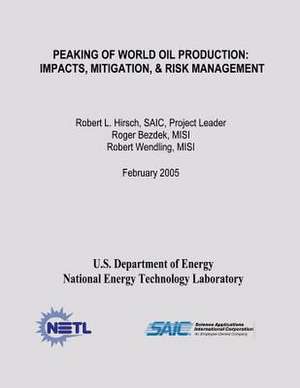Peaking of World Oil Production
Autor U. S. Department of Energy, National Energy Technology Laboratory Contribuţii de Science Applications Intern Corporationen Limba Engleză Paperback
Preț: 129.26 lei
Nou
Puncte Express: 194
Preț estimativ în valută:
24.74€ • 25.67$ • 20.68£
24.74€ • 25.67$ • 20.68£
Carte disponibilă
Livrare economică 25 februarie-11 martie
Preluare comenzi: 021 569.72.76
Specificații
ISBN-13: 9781482614312
ISBN-10: 1482614316
Pagini: 92
Dimensiuni: 216 x 280 x 5 mm
Greutate: 0.24 kg
Editura: CREATESPACE
ISBN-10: 1482614316
Pagini: 92
Dimensiuni: 216 x 280 x 5 mm
Greutate: 0.24 kg
Editura: CREATESPACE
